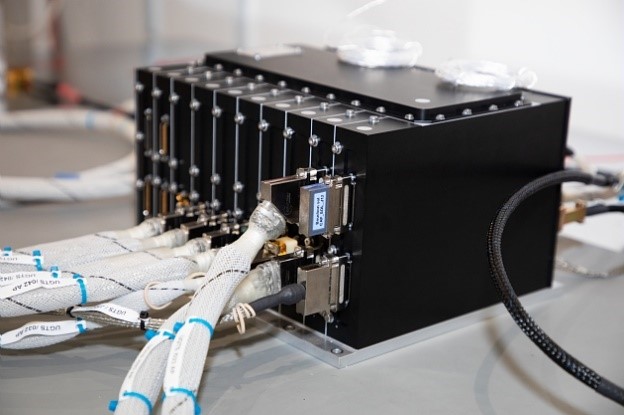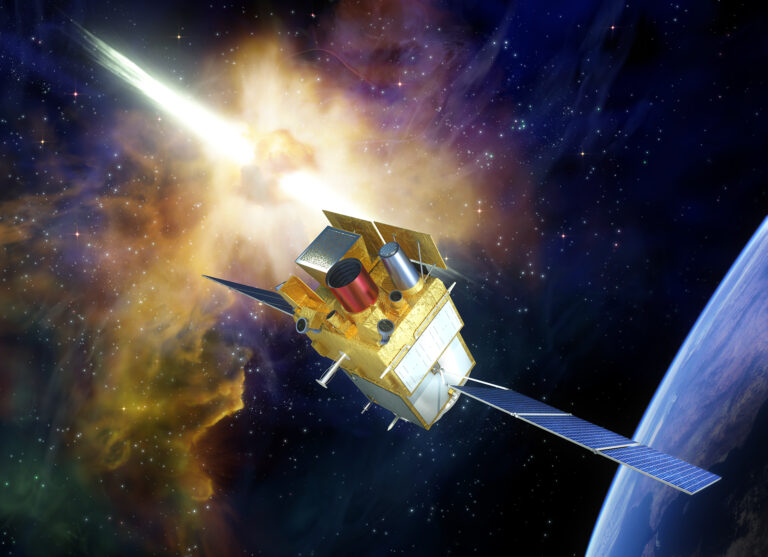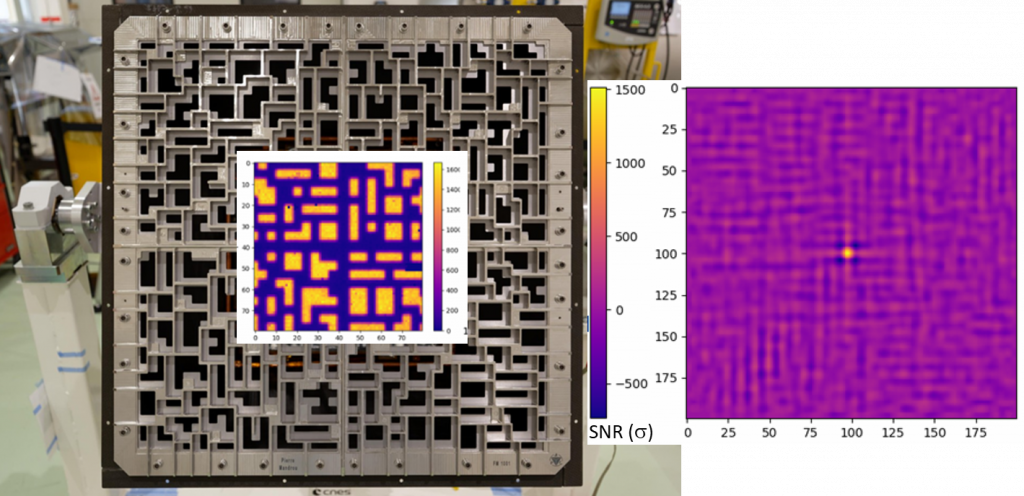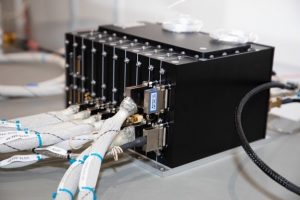CEA has delivered the flight version of the ECLAIRs onboard software to CNES after 6 years of development.
CEA has delivered to CNES the flight version of the ECLAIRs instrument software for the SVOM satellite. This concludes a major instrumental development phase conducted by CEA over a period of 6 years to produce what is maybe one of the most complex software packages ever carried on a French scientific space instrument. The latest version of the software equips the ECLAIRs onboard computer, which departed to China in early 2023. It will be used during the satellite integration tests in Shanghai in preparation for the launch planned for early 2024. This software will analyse in real time the data from the instrument in flight, in order to detect gamma-ray bursts and localise them to better than 12 arcmin on the sky, to reorient automatically the satellite for follow-up observations, and to alert the scientific community.

The main objectives of the French-Chinese satellite SVOM (for Space-based Variable Objects Monitor) are studies of gamma-ray bursts, which are fascinating astrophysical events because of their unpredictable occurrence on the sky and the tremendous amount of energy they release in the form of gamma-rays, produced by the explosion of some types of very massive stars or by the coalescence of neutron stars. These events are revealed in gamma rays by the detection of a point source lasting a fraction of a second to a few tens of seconds, rarely a few minutes. The observation of the source at longer wavelengths (in X-rays, in the visible and even in radio waves) makes it possible to study the afterglow of the event during several hours and to estimate its characteristics, in particular its distance. In most cases, the event occurred in the very distant and therefore young universe.
To detect gamma-ray bursts on board SVOM, the French ECLAIRs telescope will continuously observe one-sixth of the sky (2 steradians) in the soft gamma-ray range (from 4 to 150 keV) with its telescope equipped with a coded mask mounted above a detector plane composed of 6400 cadmium telluride pixels. The detected photons will be processed in the UGTS (Unité de Gestion et de Traitements Scientifiques), the instrument's on-board computer, by the flight software developed at CEA.
This software will analyse the data in real time to detect a gamma-ray burst and localize it to better than 12 arcmin on the sky, i.e. on an area of the sky smaller than the Moon's apparent disc. It will then automatically re-point the satellite to this position, such that the afterglow of the burst can be quickly observed with the small field-of-view instruments on board: the French MXT telescope (in X-rays, whose focal plane was produced at the CEA) and the Chinese VT telescope (in the visible). The software will also produce a sequence of alerts sent by the satellite to the French VHF receiver network deployed around the world. These alerts will be received and processed at the French Science Centre (FSC) under the responsibility of the CEA, to alert the worldwide community of transient sky observatories about the occurrence of an interesting event.

Version 7.0.3 of the flight software, delivered in February 2023, is the culmination of several successive deliveries to CNES over the last two years, each one equipped with increased functionality. These versions were tested using a test bench designed at the CEA around a representative model of the UGTS computer, then validated at the CEA by an automatic test management system. They were used successively at CNES during test campaigns and for the calibration of the instrument in a vacuum chamber, using radioactive sources and an X-ray generator. This software contains all the essential functions for the management of the instrument, from the command and control of the detector to the acquisition of the photon by photon data for their delayed transmission to the ground, to the real-time detection of gamma-ray bursts and alert message generation by the scientific software.
The software is coupled to a programmable digital circuit of type FPGA, integrated in the UGTS, whose firmware was also produced at the CEA and delivered in 2021. This circuit alleviates the computational load of the processor, carrying out the real-time acquisition of the photons from the camera, the data encapsulation into packets and their sending to the satellite's mass-memory, as well as the data pre-processing for the scientific software.

The scientific software employs two separate processing algorithms, running in parallel, one dedicated to the detection of relatively short bursts of less than 20 s duration, the other for bursts longer than 20 s, up to durations of 20 min, working in different energy bands and on various time slices, to reflect the spectral and temporal diversity of gamma-ray bursts. Using a mathematical procedure called deconvolution, these two algorithms process the image recorded by the detector plane using the coded mask pattern, to reconstruct the image of the sky, in which a new source is searched, not present in a catalogue of known sources. The deconvolution is performed more than once every 2 seconds, while one expects about one to two true gamma-ray bursts per week. Therefore the processing software must minimise the false alarm rate and avoid erroneous re-pointings. For this purpose, a number of configuration parameters allow the software to be fine-tuned, and will be adjusted according to the behaviour of the ECLAIRs detector and the background noise in flight. The system also allows for an in-flight update of the software if necessary.
The ECLAIRs flight software is perhaps one of the most complex ones ever flown on a French scientific space instrument. It has been developed at the IRFU of the CEA in the last 6 years by a joint project team of DAp and DEDIP totaling 18 people who have worked tirelessly on all the tasks: system definition and study, prototyping, development of the processor code (in C++) and the pre-processing FPGA firmware (in VHDL), creation of the test bench, creation of the functional tests and conduct of the validation… The teams are now preparing for the in-flight commissioning phase and defining the parameter adjustment strategies, while developing the tools that will make it possible to monitor the proper functioning of ECLAIRs and its software during operations.
Contacts: Stéphane Schanne
To read more about SVOM :


